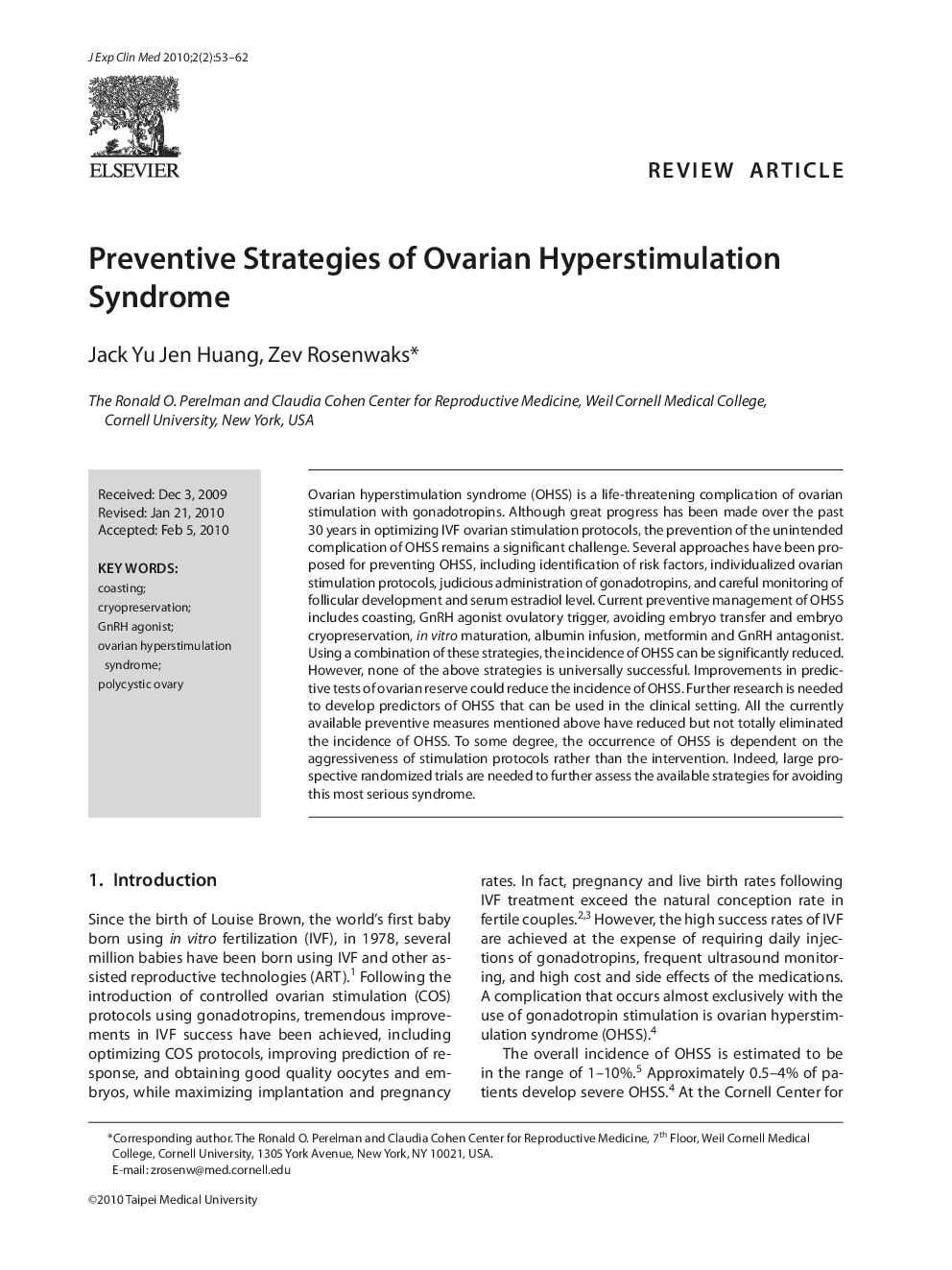| کد مقاله | کد نشریه | سال انتشار | مقاله انگلیسی | نسخه تمام متن |
|---|---|---|---|---|
| 3477936 | 1233373 | 2010 | 10 صفحه PDF | دانلود رایگان |

Ovarian hyperstimulation syndrome (OHSS) is a life-threatening complication of ovarian stimulation with gonadotropins. Although great progress has been made over the past 30 years in optimizing IVF ovarian stimulation protocols, the prevention of the unintended complication of OHSS remains a significant challenge. Several approaches have been proposed for preventing OHSS, including identification of risk factors, individualized ovarian stimulation protocols, judicious administration of gonadotropins, and careful monitoring of follicular development and serum estradiol level. Current preventive management of OHSS includes coasting, GnRH agonist ovulatory trigger, avoiding embryo transfer and embryo cryopreservation, in vitro maturation, albumin infusion, metformin and GnRH antagonist. Using a combination of these strategies, the incidence of OHSS can be significantly reduced. However, none of the above strategies is universally successful. Improvements in predictive tests of ovarian reserve could reduce the incidence of OHSS. Further research is needed to develop predictors of OHSS that can be used in the clinical setting. All the currently available preventive measures mentioned above have reduced but not totally eliminated the incidence of OHSS. To some degree, the occurrence of OHSS is dependent on the aggressiveness of stimulation protocols rather than the intervention. Indeed, large prospective randomized trials are needed to further assess the available strategies for avoiding this most serious syndrome.
Journal: Journal of Experimental & Clinical Medicine - Volume 2, Issue 2, April 2010, Pages 53-62